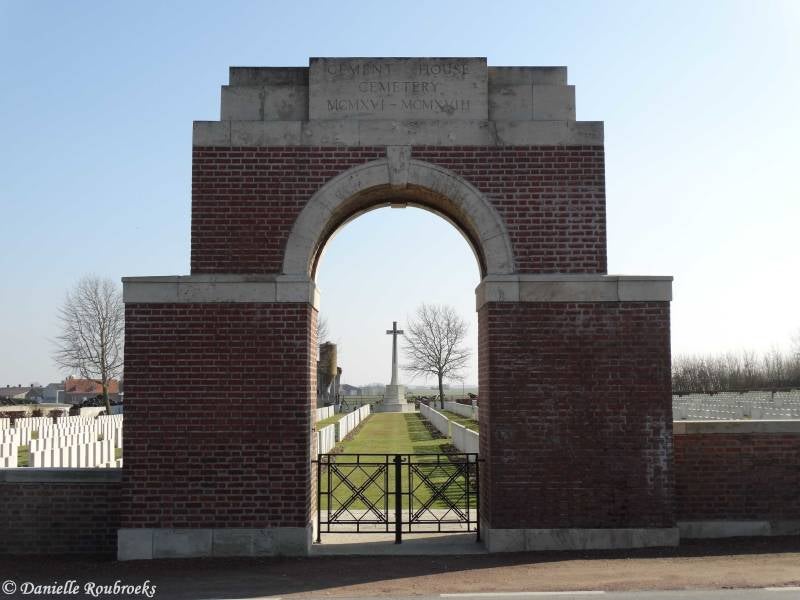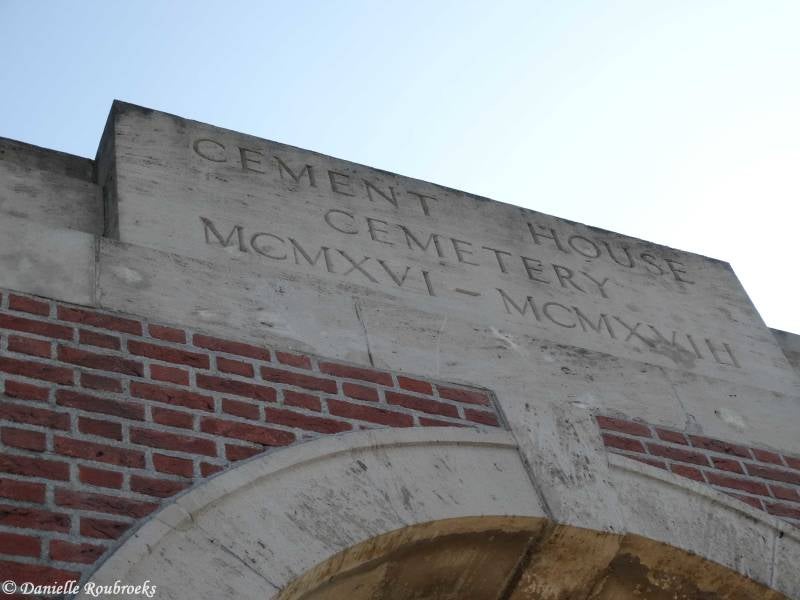Cement House Cemetery
History Information (Source: CWGC)
"Cement House" was the military name given to a fortified farm building on the Langemark-Boesinghe (now Boezinge) road. The original Cement House Cemetery (now Plot I, an irregular group of 231 graves) was begun here at the end of August 1917 and used by the 4th and 17th Division burial officers, by field ambulances and by units in the line until April 1918. In the years immediately following the Armistice, most of Plots II - XV were added when Commonwealth graves were brought in from the battlefields and small burial grounds around Langemark and Poelkapelle, mostly dating from the Autumn of 1917.
Plots XVI, XVII and XVIII originally contained some 500 French graves, but these were removed in 1922. The space vacated has been filled in over the intervening years by graves brought in from communal cemeteries and churchyards in the area, when their maintenance in these locations could no longer be assured. The cemetery is still used for the burial of remains that continue to be discovered in the vicinity, and a number of plots have been extended to accommodate these graves.
There are now 3,592 Commonwealth servicemen of the First World War buried or commemorated in the cemetery, 2,425 of the burials are unidentified. Of the 22 Second World War burials in the cemetery, five are unidentified. The cemetery was designed by Sir Reginald Blomfield.
Served with
- United Kingdom (1151)
- Canadian (29)
- Australian (4)
- New Zealand (2)
- South African (1)
Served in
- Army (1151)
- Air Force (21)
- Navy (15)

















